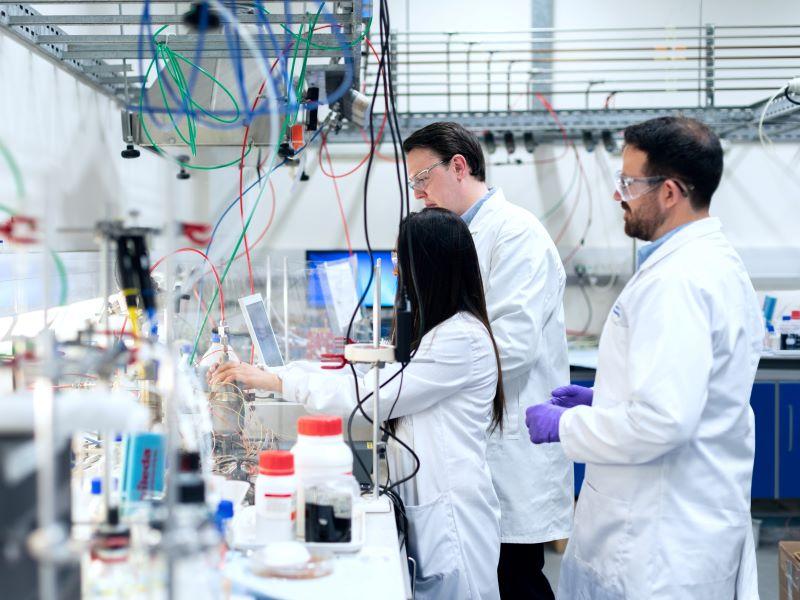Open access publishing is going mainstream. This is sometimes a requirement, but it is also perceived as complex. That’s understandable, considering that OA comes in so many definitions and shades; gold, green, platinum and diamond journals and more shape a moving landscape where different stakeholders push their own agenda.
For researchers, navigating this landscape requires consideration of costs, funding, licences and copyright issues. All these aspects are relatively new compared with the traditional subscription-based system, where researchers would not worry about subscription costs any more than libraries would care about the details of the reviewing process. Redistribution of tasks along the publishing process forces universities and institutions to reorganise their support system. Who can and who should help? And how to do so?
At the University of Luxembourg, this task lies primarily with research support staff members. The open access contact points provide advice, respond to emails, organise workflows and prepare interactive workshops on the matter. Still, the gap between the rapidly moving field and daily research practices remains often significant. We should not forget that the speed of publishing is increasing exponentially, but we cannot hit “pause” on the publication workflow while we figure out how to deal with open access. Researchers need to publish.
- What to do when an academic journal rejects your article
- Understanding peer review: what it is, how it works and why it is important
- Six tips for writing a successful book proposal
Here is a collection of the main reactions and misconceptions that can be heard daily in our practice, not only from junior researchers and PhD students but also from experienced researchers. Helpers such as ourselves must be ready to answer these at any time, with anything from a 30-second pitch for impromptu coffee-break discussions to more elaborate content in a formal training context.
OA frequently asked questions and misconceptions
I don’t care about the general public – publications are meant for my peers and they have access to my papers.
The requirements for open access are rooted in the idea that publicly funded research should be made open unconditionally to the general public. The debate is polarised. On one side, research tradition dominates; many argue that journal reputation is of the utmost importance, stressing its role in prestige and career progression, with open access being a secondary consideration. On the other hand, the ethical consideration is at the forefront. But, honestly, it is difficult to argue that publicly funded research should be appropriated by private interests, isn’t it?
I upload my papers, data etc on to my web page or my favourite social network, and that’s good enough.
It is certainly good to have papers and other resources available out there for download, and some social networks have been pushing in that direction, but it’s better if they can be found and used, and if you can track what use is made of your production. Maybe your social network organises and allows it, maybe it doesn’t. Certainly, you have read the terms of service in detail.
If I want to publish open access, I have to pay for it.
Open access and “pay to publish” are two different things, but many see them as equivalent, largely because many publishers have adopted this vocabulary in shifts in their business model. Other open access modalities exist, ranging from green self-archiving with retention rights to “diamond” journals that allow you to comply with an open access mandate without paying fees. They may not be in the spotlight and are often ignored. The underlying questions here are: who should pay and how to pay for the costs of scientific publishing? There are different answers and models out there, and as it is so often the case, diversity is beautiful.
I cannot publish open access because of potential patents and/or commercial profit.
There’s a simple and pretty ubiquitous principle that says: “As open as possible, as closed as necessary.” It applies to many situations, including research involving personal data protection and relations with other forms of intellectual property. So, there is no incompatibility, but there must be a plan! It is also the purpose of a licence to allow reuse for commercial purposes or not.
Open access means that anyone can take my work and turn it into any kind of stuff for their own benefit.
This is a legitimate concern, and it is good practice to care about how your research outputs are used; that is precisely what copyright agreements and licensing are for. The open access movement is also pushing authors to retain the rights to their work and allow distribution and uses under their own terms. Arguably, it takes a bit of time at the beginning, but will quickly become a habit.
I was told I could not reuse my own graph for a subsequent publication – how is that possible?
Yes, self-plagiarism is a thing. Could it be that you inadvertently signed a copyright agreement that posed restrictions on reusing your own work? A key here is to check how your production was distributed at its different stages (preprint, accepted manuscript, published version). The push towards open access is also a push towards a clean reuse of content.
We see that the learning curve is still steep. Open access needs resources to build the know-how, policy and strategy, and subsequent action plan.
What have we learned through our efforts?
More training given by researchers to researchers is effective in doctoral schools, in group meetings, and other settings. Off-putting technicalities of licensing and copyright can be much better addressed when you start with the bigger picture: necessary progress towards efficient distribution and reuse of publications and other research outputs, with proper credit.
Inma Peral is a research facilitator and Mael Guennou is an assistant professor, both in the Faculty of Science, Technology and Medicine at the University of Luxembourg.
If you would like advice and insight from academics and university staff delivered direct to your inbox each week, sign up for the Campus newsletter.




comment1
(No subject)